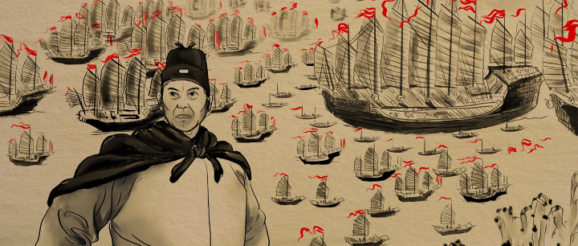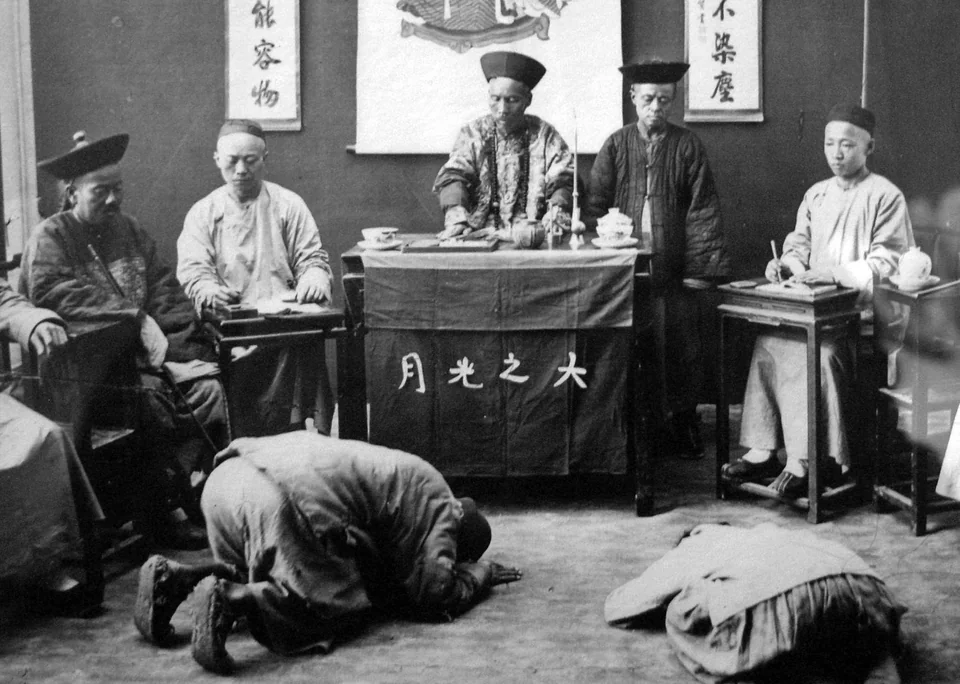Disruptive innovation in the economic organization of China and the West

Summary of JOIE article ( 21 September 2022) by Hilton L. Root, Schar School of Policy and Government, George Mason University, Arlington, VA, USA. The full article is available on the JOIE website

In this article I explore the influence of network design (topology) on the larger organizational structures of the historical regimes of China and the West. I consider how the different patterns of node attachment incentivize individual agents and drive innovation and diffusion and build a theory for the development of societies and states from endogenous mechanisms of social change. By recognizing that societies have the properties of multilevel systems, and that as systems, their structural designs evolve through the interdependence of the micro and macro levels, it is possible to map patterns and explain how the large sudden shocks to which economies are prone can arise endogenously.
In any society, how networks evolve by adding or subtracting connections is critical to system durability. In the historical societies of China and Western Europe, the respective central nodes created hypernetworks that differed internally, and in their evolution, as a consequence of the connections those hubs forged with more peripheral nodes. In Europe the highly connected hubs were able to link with other highly connected hubs, producing a society that innovated by “connectiveness.” By contrast, China endured because in its system topology the central hub was able to constrain connectivity among nodes and prevent subnetworks from developing in parallel to networks of the state.
At the macro level in both East and West, the monarch dictated the developmental patterns of the whole. In both, the system of dynastic succession created a hypernetwork of royal houses whose properties (small-world connectivity and reduced average path length) contributed to system durability and enabled social complexity to scale.The European hypernetwork, comprising many hubs, each with its own highly skewed degree distribution, evolved into segmented lineages, yet the linkages among them fostered an overall structure that was neither decomposable nor in need of centralized prompting.

Europe’s monarchs had the same incentives as their Chinese counterparts—to bolster their own power—but they had fewer means to filter the flow of disruptive technologies and revolutionary ideas. Topologies that facilitated information flow, via private universities, guilds, courts, trade, and religious confraternities, rendered the monarchs powerless to stem the spread of innovation or to control systems of production. Waves of innovation could arise in one corner of the continent and transform social and state organization in another. They competed as well with the authority of the Roman Church, another system-spanning hypernetwork. The royals were never fully willing to embrace its rival authority since the Church enabled the populace to build organizations in parallel with the state. Yet the competing houses shared an interest in grounding the people’s overarching unity upon a common faith, and this paved the way for the pervasive role of the Church as a locally grown source of a shared continent-wide identity.

Emanating from the village parishes, the Church gained an extensive role in managing cultural evolution. It introduced moral frameworks, such as caritas,which promoted empathy beyond kinship; and cultural practices, like the ban on cousin marriages. The Church also reinforced innovative behaviors of social coordination, including across community groups of intersecting bonds, such as voluntary associations (e.g., urban communes and monastic orders) and common-interest organizations (trade associations and corporations; craft and merchant guilds that built their own institutional infrastructures for mutual self-help. The merchants’ Lex mercatoria, and the assurances it provided, reduced the uncertainty of exchange with strangers, including foreigners, so that groups of people who had no prior relationships could pool resources and build private firms and markets. These gave Europe a cumulative advantage in organizational skills to sustain cooperation grounded in contractual rights. Building upon this implicit capacity, the centralizing state in Europe modernized, with close ties of interdependence with civil society.

Significant macro variation differentiated Europe’s state–society relationships from those of Imperial China, where state and church were one. The top-down distribution of imperial administration, with personnel (the mandarins, or bureaucrat scholars) recruited via a nationwide examination system, allowed for a rapid diffusion of court-approved innovations. However, in the local order inspired by Confucian ethics, central administers had no explicit role for effecting behavioral change across the empire. The moral and material welfare of local communities was left to local lineage leaders, creating a system that undermined the strong rule of impartial meritocracy found in the examination process for the recruitment of officials.
Kinship served as an autonomous institution in civil affairs and the basic unit of rural society throughout the history of Imperial China from as early as the Yuan dynasties (1271–1368). It expanded into full rural society self-governance in the Qing dynasty (1636–1912), when a derisory number of court-designated magistrates took up assignment in local offices to oversee daily administration, as well as civil and criminal cases in the vast countryside. Kinship associations were elevated because they offered no institutional capacity for locals to voice their interests against those of the state. In short, the imperial administration stymied the formation of formal institutions that could sustain cooperation or assistance via voluntary civic organization among individuals, families, and groups sharing common interests, relying instead on ancient Confucian moralism and village elders to provide problem-solving capacity at the local levels.

This reliance on clan, village, and networks of personal acquaintances, embedded systemically and organically in China’s network structure of political authority, had widespread consequences for social accountability, and fostered a reliance on guanxi in social and business transactions, and on patron–client ties in state and society relationships.
In both Western Europe and China, variations in the diffusion of interpersonal trust, cultural norms, and moral protocols at local levels had feedbacks into the macro system itself. Europeans acquired a capacity to anonymize market transactions at local levels that allowed the macro structure of continental society to transition into an “open access order.” In China, meanwhile, subnetworks built on kinship or personalized markers of trustworthiness were allowed to proliferate, but this “natural state” prevented additional connections, “froze” the network structure, thwarted the path to potentially disruptive technological change, fostered informal relationship-based financing, and impeded the formation of autonomous civil-society institutions.
In sum, the identification of topologies within a large-scale network is key to understanding the dissemination dynamics of information, technology, and cultural change. System-spanning networks can facilitate technological diffusion, but the networks for technological diffusion and those for cultural or social behavior are not the same. This should help us to better grasp why cultural and social norms, freedom of expression, and individual or human rights, transfer sluggishly relative to the rapid transmission of industrial techniques or methods of financial management.
The post Disruptive innovation in the economic organization of China and the West appeared first on JoIE Blog.
